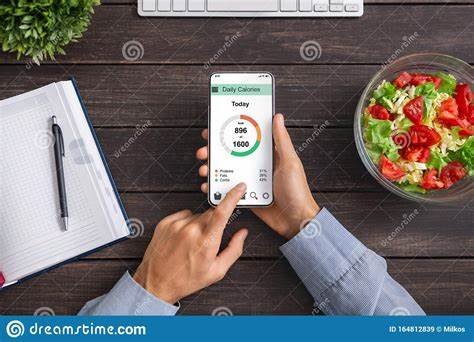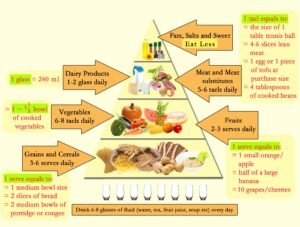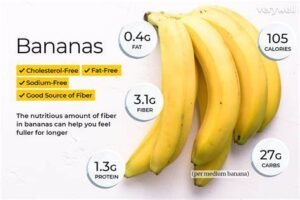Understanding Calorie Deficit for Effective Weight Loss
Ever wondered why some people seem to effortlessly shed pounds while others struggle? The secret lies in a simple concept: calorie deficit. It’s a fancy term for consuming fewer calories than you burn.
Think of it like spending less money than you earn – your wallet gets fatter over time. Similarly, a calorie deficit leads to weight loss.
But don’t worry, it’s not about starving yourself. A calorie deficit is all about finding a balance between the calories you consume and the calories you burn through daily activities and exercise.
It’s like managing your finances – you don’t need to go broke to save money; you just need to spend wisely.
Remember, a calorie deficit is not just about restricting your diet. It’s about finding a sustainable approach that works for you. Combining a balanced diet with regular exercise is key to achieving and maintaining a healthy weight.
Day 1: Understanding Your Calorie Needs
Let’s dive into the first step of your 5-day plan: understanding your calorie needs. This involves calculating your daily calorie maintenance level and determining your target calorie deficit for weight loss.

To calculate your daily calorie maintenance level, you can use a calorie calculator. These online tools take into account factors such as your age, height, weight, and activity level.
By inputting your information, you’ll get a rough estimate of the number of calories you need to maintain your current weight.
Once you know your maintenance level, you can determine your target calorie deficit. For weight loss, aim to consume 500 to 750 fewer calories than your maintenance level each day. This deficit will help you shed pounds gradually without feeling deprived.
Remember, a calorie deficit is not about restricting yourself to unhealthy foods. It’s about making smart choices and ensuring you’re getting all the essential nutrients your body needs. Focus on incorporating whole, unprocessed foods into your diet, such as fruits, vegetables, lean proteins, and whole grains.
What calorie deficit should I be on?
The ideal calorie deficit for you will depend on your individual goals and circumstances. A general guideline is to aim for a 500 to 750 calorie deficit per day. However, it’s always best to consult with a healthcare professional or registered dietitian for personalized advice.
Day 2: Incorporating Exercise
Exercise not only helps you burn calories but also boosts your metabolism and improves your overall health.

Regular physical activity can help you create a calorie deficit more effectively. When you exercise, you burn calories, which can contribute to weight loss. Additionally, exercise can help build muscle mass, which can boost your metabolism and make it easier to burn calories even when you’re at rest.
Types of Exercise
The best type of exercise for you will depend on your fitness level and preferences. Here are some popular options:
- Cardiovascular exercise: Walking, running, swimming, cycling, dancing
- Strength training: Weightlifting, bodyweight exercises, resistance band training
- Flexibility and balance exercises: Yoga, Pilates, tai chi
Staying motivated can be challenging, but it’s essential for sticking to your exercise routine. Here are some tips to help you stay motivated:
- Find an activity you enjoy: Choose exercises that you find fun and engaging.
- Set realistic goals: Start with achievable goals and gradually increase the intensity and duration of your workouts.
- Find a workout buddy: Exercising with a friend can make it more enjoyable and help you stay accountable.
- Reward yourself: Celebrate your achievements and reward yourself for sticking to your exercise plan.
How do I create a calorie deficit?
While exercise can help you create a calorie deficit, it’s important to remember that it’s not the only factor. To achieve a calorie deficit, you’ll also need to pay attention to your diet and consume fewer calories than you burn. Combining a balanced diet with regular exercise is the most effective way to lose weight and maintain a healthy lifestyle.
Day 3: Tracking Your Progress
Tracking your progress is a crucial step in your weight loss journey. By monitoring your food intake, exercise, and weight, you can stay accountable and make adjustments as needed.
Tracking your food intake can help you identify areas where you may be overeating or consuming unhealthy foods.
There are many tools and apps available to help you track your calories, macronutrients, and micronutrients. Some popular options include My Fitness Pal, Lose It!, and Cronometer.
In addition to tracking your food intake, it’s also important to track your exercise. This will help you monitor your progress and stay motivated.
You can use fitness trackers, exercise apps, or simply write down your workouts in a journal.

To stay accountable, consider sharing your progress with a friend, family member, or online community.
Having someone to support and encourage you can make a big difference. You can also set weekly or monthly goals and celebrate your achievements along the way.
What are calorie deficit foods?
Calorie deficit foods are simply foods that have fewer calories than the calories you burn. While there isn’t a specific list of “calorie deficit foods,” generally, foods that are low in calories and high in nutrients are considered good options.
This includes fruits, vegetables, lean proteins, whole grains, and low-fat dairy products.
Remember to avoid processed foods, sugary drinks, and excessive amounts of unhealthy fats and carbohydrates.
Day 4: Addressing Common Challenges
Maintaining a calorie deficit can be challenging. There may be times when you feel tempted to cheat or give up. But remember, it’s important to stay focused and committed to your goals.
Common Obstacles:
Some common challenges people face when trying to maintain a calorie deficit include:
- Cravings: It’s normal to have cravings, but it’s important to find healthy ways to satisfy them.
- Social pressures: Sometimes, social events can make it difficult to stick to your diet.
- Lack of motivation: It’s easy to lose motivation, especially if you don’t see results immediately.
Tips for Staying on Track
Here are some strategies for overcoming these challenges:
- Plan ahead: Prepare healthy meals and snacks in advance so you’re less likely to make unhealthy choices.
- Find healthy alternatives: If you’re craving something sweet, try a piece of fruit or a handful of berries.
- Practice mindfulness: Pay attention to your hunger cues and avoid emotional eating.
- Find a support system: Surround yourself with people who support your goals and encourage you to stay on track.

Staying motivated can be difficult, but it’s important to remember why you started this journey.
Set small, achievable goals and celebrate your successes along the way. It’s also helpful to visualize your desired outcome and imagine how you’ll feel once you reach your goals.
How do I calculate my calorie intake?
To calculate your calorie intake, you can use a calorie tracking app or website.
These tools allow you to input the foods and drinks you consume throughout the day, and they will calculate the total number of calories you’ve consumed.
It’s important to be as accurate as possible when tracking your calorie intake.
Click to see
Day 5: Long-Term Sustainability
Congratulations on completing the 5-day plan! Now that you have a solid foundation, it’s time to focus on building a sustainable lifestyle that supports your weight loss goals.

Remember, weight loss is a journey, not a destination. It’s important to focus on making gradual, sustainable changes rather than trying to lose weight too quickly.
By adopting healthy habits and making lifestyle changes, you can achieve lasting weight loss and improve your overall health.
Tips to maintain a healthy lifestyle
Here are some tips for maintaining a healthy lifestyle:
- Prioritize nutrition: Focus on eating whole, unprocessed foods and limiting your intake of sugary drinks and processed snacks.
- Stay active: Aim for at least 150 minutes of moderate-intensity exercise per week.
- Manage stress: Find healthy ways to manage stress, such as meditation, yoga, or spending time in nature.
- Get enough sleep: Aim for 7-9 hours of quality sleep each night.
Remember, it’s okay to have setbacks. The key is to stay focused and keep moving forward. Celebrate your successes, no matter how small, and don’t get discouraged by temporary setbacks.
How to burn 1000 calories a day?
Burning 1000 calories a day can be achieved through a combination of exercise and dietary changes. Engaging in intense workouts like running, swimming, or cycling for an hour can burn a significant number of calories.
Additionally, making mindful choices about your food intake can help you reduce your overall calorie consumption.
Remember, it’s important to consult with a healthcare professional before making any drastic changes to your diet or exercise routine.





